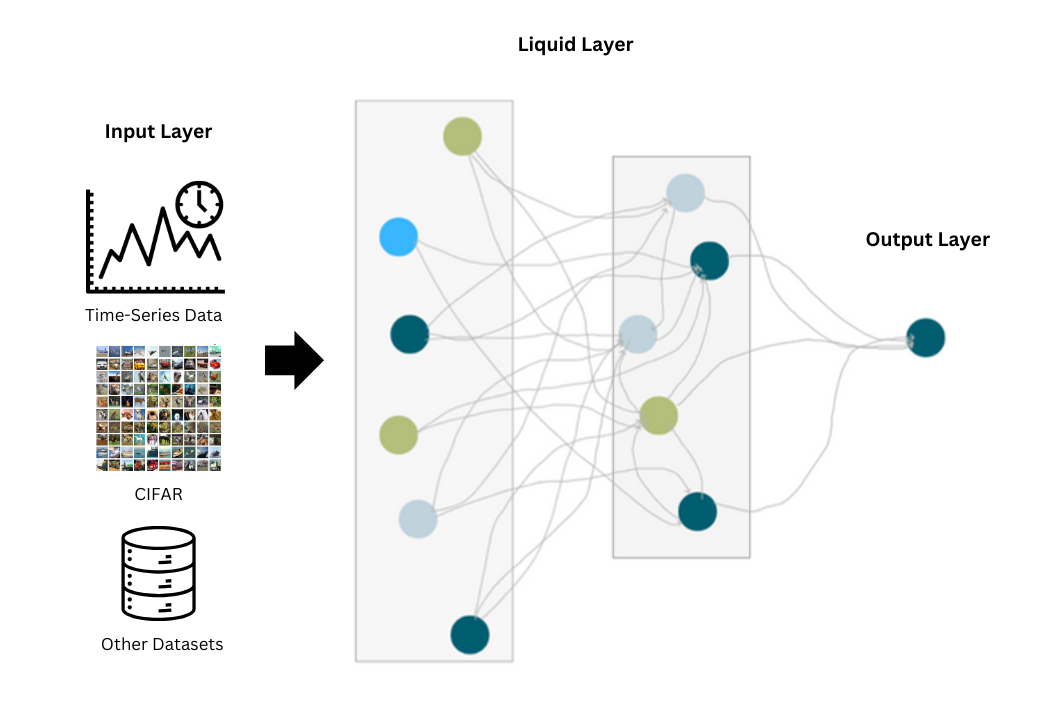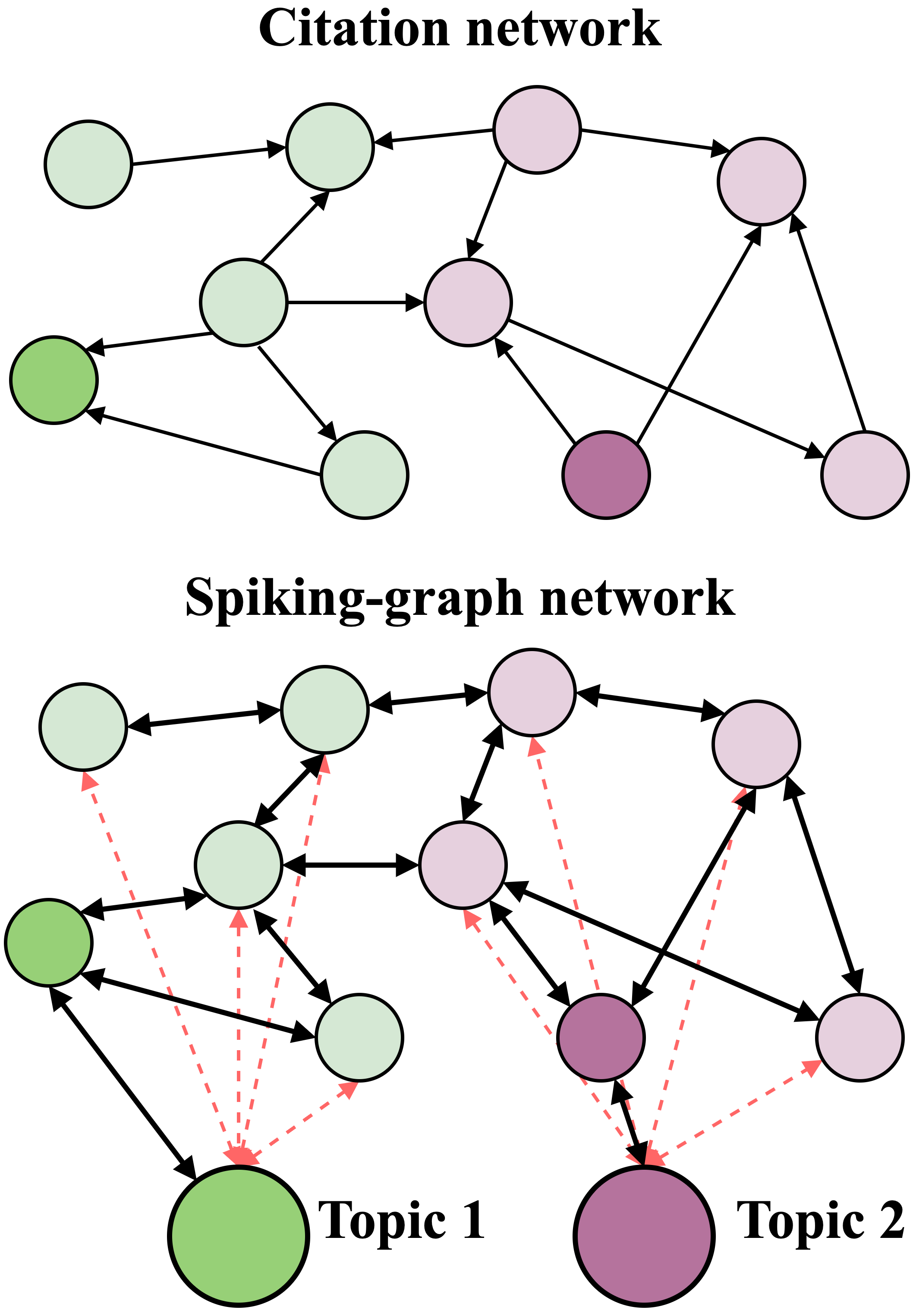Exploring Liquid Neural Networks on Loihi-2

0

Sign in to get full access
Overview
- Explores the implementation of Liquid Neural Networks (LNNs) on the Loihi-2 neuromorphic hardware platform
- Investigates the potential of LNNs for efficient and flexible neuromorphic computing
- Examines the performance and characteristics of LNNs on Loihi-2 through various experiments
Plain English Explanation
Liquid Neural Networks (LNNs) are a type of Spiking Neural Networks that can adaptively process information in a dynamic and flexible way, much like how the human brain works. The researchers in this paper wanted to see how well LNNs could be implemented on the Loihi-2 neuromorphic hardware platform, which is designed to run Spiking Neural Networks efficiently.
The key idea behind LNNs is that they have a "liquid" or chaotic network structure that can quickly adapt to different tasks or inputs, much like how the human brain is able to learn and adapt rapidly. This makes LNNs a potentially powerful tool for neuromorphic computing, which tries to mimic the brain's efficient and flexible way of processing information.
The researchers conducted various experiments to see how well LNNs could be implemented on the Loihi-2 chip and how their performance compared to other types of neural networks. They found that LNNs were able to achieve good performance on a range of tasks, while also demonstrating the potential for fast and efficient neuromorphic computing on the Loihi-2 platform.
Technical Explanation
The researchers first provide an overview of Liquid Neural Networks (LNNs) and their key characteristics, including their dynamic and adaptive nature, as well as their potential for efficient neuromorphic computing. They then describe the Loihi-2 neuromorphic hardware platform and its capabilities, highlighting its suitability for running Spiking Neural Networks like LNNs.
The researchers conducted several experiments to evaluate the performance of LNNs on the Loihi-2 platform. This included testing LNNs on various tasks, such as time series prediction and pattern recognition, and comparing their performance to other types of neural networks. They also investigated the impact of different LNN hyperparameters and network configurations on the overall performance.
The results of the experiments showed that LNNs were able to achieve good performance on the tested tasks, demonstrating the potential of neuromorphic computing with LNNs on the Loihi-2 platform. The researchers also observed that LNNs exhibited characteristics like fast adaptation and energy efficiency, which are desirable for real-world applications.
Critical Analysis
The paper provides a comprehensive exploration of LNNs on the Loihi-2 neuromorphic hardware, but it does not address some potential limitations or areas for further research. For example, the paper does not discuss the scalability of LNNs to larger and more complex tasks, or how they might perform on more challenging neuromorphic computing benchmarks.
Additionally, the paper could have delved deeper into the underlying mechanisms and principles that enable the flexibility and adaptability of LNNs, as this could provide valuable insights for further improving and optimizing their performance on neuromorphic hardware.
Conclusion
This paper demonstrates the promising potential of Liquid Neural Networks (LNNs) for efficient and flexible neuromorphic computing on the Loihi-2 hardware platform. The experiments conducted by the researchers show that LNNs can achieve good performance on a range of tasks, while also exhibiting desirable characteristics like fast adaptation and energy efficiency.
The findings in this paper suggest that LNNs may be a valuable tool for the development of advanced neuromorphic computing systems that can efficiently process information in a manner akin to the human brain. Further research into the scalability and optimization of LNNs on neuromorphic hardware could lead to even more significant advancements in this exciting field.
This summary was produced with help from an AI and may contain inaccuracies - check out the links to read the original source documents!
Related Papers


0
Exploring Liquid Neural Networks on Loihi-2
Wiktoria Agata Pawlak, Murat Isik, Dexter Le, Ismail Can Dikmen
This study investigates the realm of liquid neural networks (LNNs) and their deployment on neuromorphic hardware platforms. It provides an in-depth analysis of Liquid State Machines (LSMs) and explores the adaptation of LNN architectures to neuromorphic systems, highlighting the theoretical foundations and practical applications. We introduce a pioneering approach to image classification on the CIFAR-10 dataset by implementing Liquid Neural Networks (LNNs) on state-of-the-art neuromorphic hardware platforms. Our Loihi-2 ASIC-based architecture demonstrates exceptional performance, achieving a remarkable accuracy of 91.3% while consuming only 213 microJoules per frame. These results underscore the substantial potential of LNNs for advancing neuromorphic computing and establish a new benchmark for the field in terms of both efficiency and accuracy.
Read more7/31/2024


0
Transductive Spiking Graph Neural Networks for Loihi
Shay Snyder (George Mason University), Victoria Clerico (George Mason University), Guojing Cong (Oak Ridge National Laboratory), Shruti Kulkarni (Oak Ridge National Laboratory), Catherine Schuman (University of Tennessee - Knoxville), Sumedh R. Risbud (Intel Labs), Maryam Parsa (George Mason University)
Graph neural networks have emerged as a specialized branch of deep learning, designed to address problems where pairwise relations between objects are crucial. Recent advancements utilize graph convolutional neural networks to extract features within graph structures. Despite promising results, these methods face challenges in real-world applications due to sparse features, resulting in inefficient resource utilization. Recent studies draw inspiration from the mammalian brain and employ spiking neural networks to model and learn graph structures. However, these approaches are limited to traditional Von Neumann-based computing systems, which still face hardware inefficiencies. In this study, we present a fully neuromorphic implementation of spiking graph neural networks designed for Loihi 2. We optimize network parameters using Lava Bayesian Optimization, a novel hyperparameter optimization system compatible with neuromorphic computing architectures. We showcase the performance benefits of combining neuromorphic Bayesian optimization with our approach for citation graph classification using fixed-precision spiking neurons. Our results demonstrate the capability of integer-precision, Loihi 2 compatible spiking neural networks in performing citation graph classification with comparable accuracy to existing floating point implementations.
Read more4/29/2024


0
Neuromorphic on-chip reservoir computing with spiking neural network architectures
Samip Karki, Diego Chavez Arana, Andrew Sornborger, Francesco Caravelli
Reservoir computing is a promising approach for harnessing the computational power of recurrent neural networks while dramatically simplifying training. This paper investigates the application of integrate-and-fire neurons within reservoir computing frameworks for two distinct tasks: capturing chaotic dynamics of the H'enon map and forecasting the Mackey-Glass time series. Integrate-and-fire neurons can be implemented in low-power neuromorphic architectures such as Intel Loihi. We explore the impact of network topologies created through random interactions on the reservoir's performance. Our study reveals task-specific variations in network effectiveness, highlighting the importance of tailored architectures for distinct computational tasks. To identify optimal network configurations, we employ a meta-learning approach combined with simulated annealing. This method efficiently explores the space of possible network structures, identifying architectures that excel in different scenarios. The resulting networks demonstrate a range of behaviors, showcasing how inherent architectural features influence task-specific capabilities. We study the reservoir computing performance using a custom integrate-and-fire code, Intel's Lava neuromorphic computing software framework, and via an on-chip implementation in Loihi. We conclude with an analysis of the energy performance of the Loihi architecture.
Read more7/31/2024
🖼️

0
Learning-to-learn enables rapid learning with phase-change memory-based in-memory computing
Thomas Ortner, Horst Petschenig, Athanasios Vasilopoulos, Roland Renner, v{S}pela Brglez, Thomas Limbacher, Enrique Pi~nero, Alejandro Linares Barranco, Angeliki Pantazi, Robert Legenstein
There is a growing demand for low-power, autonomously learning artificial intelligence (AI) systems that can be applied at the edge and rapidly adapt to the specific situation at deployment site. However, current AI models struggle in such scenarios, often requiring extensive fine-tuning, computational resources, and data. In contrast, humans can effortlessly adjust to new tasks by transferring knowledge from related ones. The concept of learning-to-learn (L2L) mimics this process and enables AI models to rapidly adapt with only little computational effort and data. In-memory computing neuromorphic hardware (NMHW) is inspired by the brain's operating principles and mimics its physical co-location of memory and compute. In this work, we pair L2L with in-memory computing NMHW based on phase-change memory devices to build efficient AI models that can rapidly adapt to new tasks. We demonstrate the versatility of our approach in two scenarios: a convolutional neural network performing image classification and a biologically-inspired spiking neural network generating motor commands for a real robotic arm. Both models rapidly learn with few parameter updates. Deployed on the NMHW, they perform on-par with their software equivalents. Moreover, meta-training of these models can be performed in software with high-precision, alleviating the need for accurate hardware models.
Read more5/9/2024